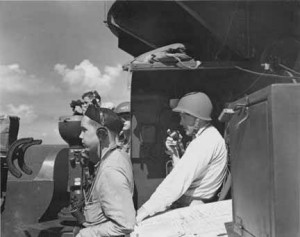
Gunnery personnel aboard the USS New Mexico (1942-45?). US Navy photograph, courtesy of the Palace of the Governors Photo Archives.
They were young then, boys, really. Serving aboard what was then the most technologically advanced battleship in the US fleet, they saw some of the worst of World War II – and were there for the final surrender of Japan.
On Sunday, Jan. 23, the New Mexico History Museum paid tribute to “the Queen of the Fleet,” and to the men (and, soon, women) who serve on the new USS New Mexico, now fittingly the Navy’s most technologically advanced nuclear submarine.
With the opening of A Noble Legacy: The USS New Mexico, 270-some people came to the museum to view the lobby-area installation and hear from dignitaries – among them, George Perez, commander of the submarine USS New Mexico (SSN 779).
It was a day when the most honored people in the house were men in blue caps. Some of them were balding, some were gray and some were young(ish). Military bearing was the order of the day, and the phrase, “Thank you for your service,” was heard again and again.
Ret. Chief Warrant Officer George Smith, who served on the USS New Mexico (BB 40) battleship in World War II, traveled from his home near Philadelphia to speak during the opening ceremony. He recounted with humor his efforts to become a submarine man and choked up not only himself but everyone in the auditorium with how closely he came to joining the many men who lost their lives in World War II.
“My tenure on the New Mexico was one of the finest tours I had in the Navy,” he said. “That was the white-hat Navy. When they went ashore they were neat and clean, and they weren’t in the Zumwalt uniform.”
(In the 1970s, then-Chief of Naval Operations Elmo Zumwalt attempted to encourage more enlistments by ditching the WW2-era Navy blues for a more casual look. Met with derision, it lasted only five years. Author Paul Fussell writes of the switch here.)
“There were no baseball caps worn with the bill in the back,” Smith said. “That didn’t happen. The New Mexico was a clean ship. If you were one minute late coming back from liberty, you stayed aboard for two weeks. They knew what the rules were and they followed it. I’m proud to have served two years on that ship.”
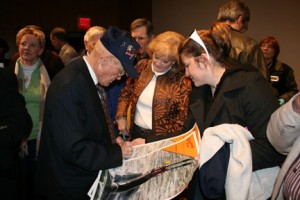 The audience gave Smith a standing ovation and, after the event, clustered around him for autographs on posters of the submarine.
The audience gave Smith a standing ovation and, after the event, clustered around him for autographs on posters of the submarine.
Cmdr. Perez, his bearing both dignified and genial, regaled the audience with details of his new ship, which is running through trials now and will join the Navy fleet in late 2012.
“She is the most powerful warship ever built in the history of the US Navy, probably second only to the BB 40 – which isn’t bad,” he said to laughter.
“We are New Mexico,” he said. “If you descended on that warship today, you would know. We are constantly working to continue to build that relationship. We prefer to have the Land of Enchantment anywhere we can get the pieces inside.”
That includes Southwestern-themed curtains that close across the crewmates’ bunks, provided to the ship by members of the Navy League Council of New Mexico, the group that lobbied for five years to have the sub named for the state.
Clearly proud of his ship, Cmdr. Perez delivered a tantalizing offer to those at the event: “Everyone here has an opportunity to get on board. Just show up and show me a New Mexico driver’s license, and you’ll get on board.”
But then, he noted, it is currently at home port in Groton, Ct., where “there’s about three or four feet of snow on the ground, so this isn’t the time to do it.”
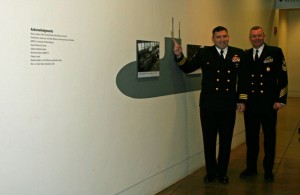 As for bringing it to our high-desert state, Perez noted, “There’s no port to pull into here. I did get offered a Lexus if I could navigate up the Rio Grande.”
As for bringing it to our high-desert state, Perez noted, “There’s no port to pull into here. I did get offered a Lexus if I could navigate up the Rio Grande.”
(As a consolation prize to the Lexus, museum Director Dr. Frances Levine presented Cmdr. Perez and Chief of Board Eric Murphy with copies of the book Telling New Mexico: A New History and jars of History Museum red-chile sauce, prepared by the legendary Shed restaurant in Santa Fe.)
Perez and Murphy stayed after the event to speak with visitors, and Perez was clearly charmed by one particular aspect of the installation. Facing walls of a hallway are bedecked with silhouettes of the two ships at 1/20th scale. The exhibition’s graphics designer, Natalie Baca, added a last-minute detail to the SSN 779 silhouette: An image of Perez himself taken from a photograph she found on the internet and placed on the submarine to show its scale relative to people. Perez and Murphy proudly posed next to it for family photographs snapped by their wives.
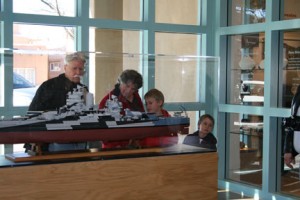 A highlight of the installation is a scale model of BB 40 begun 30 years ago by Navy veteran and Albuquerque resident Cecil Whitson. Fellow Navy veteran Keith Liotta and the Albuquerque Scale Modelers Club added final touches after an illness stopped Whitson’s work, and all day, families with children, Navy veterans and model-building aficionados clustered around it, admiring the intricacy of Whitson’s work. Some of the most enthusiastic applause at the opening ceremony was when Levine asked the audience to extend its “collective gratitude” to Whitson.
A highlight of the installation is a scale model of BB 40 begun 30 years ago by Navy veteran and Albuquerque resident Cecil Whitson. Fellow Navy veteran Keith Liotta and the Albuquerque Scale Modelers Club added final touches after an illness stopped Whitson’s work, and all day, families with children, Navy veterans and model-building aficionados clustered around it, admiring the intricacy of Whitson’s work. Some of the most enthusiastic applause at the opening ceremony was when Levine asked the audience to extend its “collective gratitude” to Whitson.
The early plan for the installation included one of BB 40’s helms, now ensconced at the University of New Mexico and at the Montoya Building in Santa Fe. “But they’re built into the fabric of the buildings,” Levine said, “and demolition wasn’t in our budget.”
What is included are archival and contemporary photographs of both ships and a video produced by KNME, USS New Mexico BB40: The Drinan Diary. You can catch it by clicking on the link, but the experience of seeing it on the auditorium’s big screen provided the emotional highlight of the day.
“What museums do matters,” Levine told attendees. “We give voice to people who lived in different centuries in times of peace, in times of war.”
On Sunday, we also put faces to those stories and were honored to be a place where Navy men and women could make new connections with one another. As a gift to those who continue to serve aboard USS New Mexico, we’ll close this post with a collection of photos to let them virtually attend the event. We wish them calm waters and extend an offer of our own: If you’re ever in Santa Fe, we’ll meet you at The Shed.
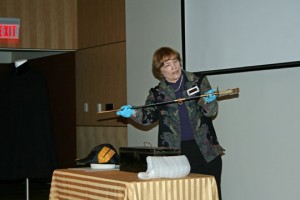
Collections Manager Wanda Edwards with a pre-WW2, sharkskin-handled sword.
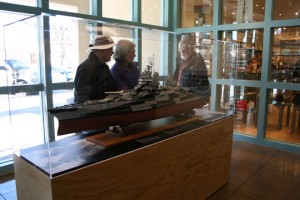
Visitors at Cecil Whitson's model of the BB 40.
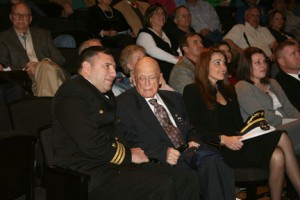
Cmdr. George Perez and Ret. CWO George Smith at the opening ceremony.
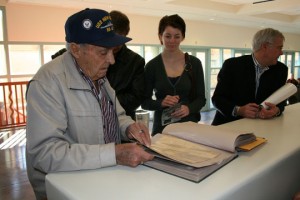
Former BB 40 crewmate LaVell Richins shared a scrapbook of his service, brought from his home in Utah.
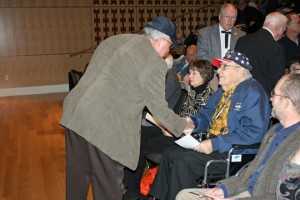
Two Navy veterans make a connection.
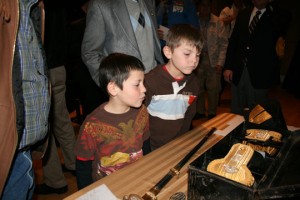
Young visitors check out parts of a 1920s era uniform worn aboard BB 40.
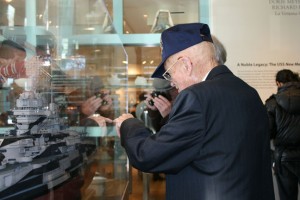
Ret. CWO George Smith points to the place on the BB 40 model where he was stationed during WW2.
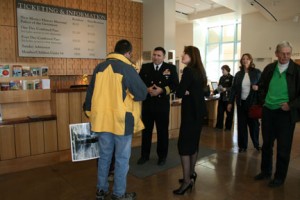
Cmdr. George Perez greets visitors in the New Mexico History Museum lobby.
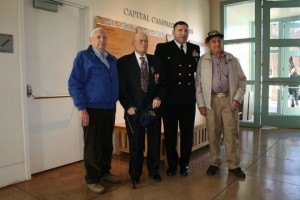
Cmdr. Perez with BB 40 veterans James Kennedy (from left), George Smith and LaVell Richins
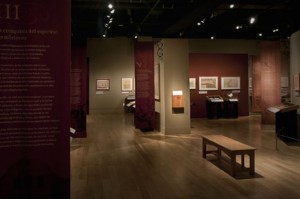 Did you take a spin through The Threads of Memory: Spain and the United States (El Hilo de la Memoria: España y los Estados Unidos)? If so, we could use your help.
Did you take a spin through The Threads of Memory: Spain and the United States (El Hilo de la Memoria: España y los Estados Unidos)? If so, we could use your help.
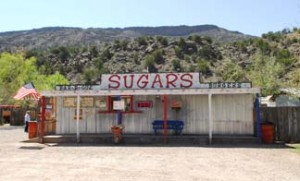 From
From 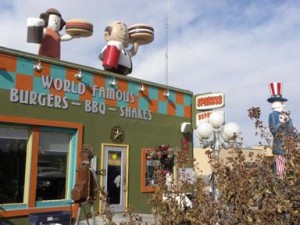 Throughout the state’s history, New Mexicans have nurtured a love affair with their restaurants. Jamison will pull on heartstrings like the
Throughout the state’s history, New Mexicans have nurtured a love affair with their restaurants. Jamison will pull on heartstrings like the  Jamison works as culinary consultant with the New Mexico Tourism Department and the New Mexico History Museum. She also consults on outdoor kitchen design with interior designer Barbara Templeman, through their business insideOUTsantafe. She is a board member of Cooking with Kids, one of the country’s first programs that addressed getting good food into our schools, and was a recipient of the University of Illinois’s alumni achievement award in 2007. Bill Jamison is retired from saving the world and keeps their lives in order from their home in Tesuque.
Jamison works as culinary consultant with the New Mexico Tourism Department and the New Mexico History Museum. She also consults on outdoor kitchen design with interior designer Barbara Templeman, through their business insideOUTsantafe. She is a board member of Cooking with Kids, one of the country’s first programs that addressed getting good food into our schools, and was a recipient of the University of Illinois’s alumni achievement award in 2007. Bill Jamison is retired from saving the world and keeps their lives in order from their home in Tesuque.
 The audience gave Smith a standing ovation and, after the event, clustered around him for autographs on posters of the submarine.
The audience gave Smith a standing ovation and, after the event, clustered around him for autographs on posters of the submarine. As for bringing it to our high-desert state, Perez noted, “There’s no port to pull into here. I did get offered a Lexus if I could navigate up the Rio Grande.”
As for bringing it to our high-desert state, Perez noted, “There’s no port to pull into here. I did get offered a Lexus if I could navigate up the Rio Grande.” A highlight of the installation is a scale model of BB 40 begun 30 years ago by Navy veteran and Albuquerque resident Cecil Whitson. Fellow Navy veteran Keith Liotta and the Albuquerque Scale Modelers Club added final touches after an illness stopped Whitson’s work, and all day, families with children, Navy veterans and model-building aficionados clustered around it, admiring the intricacy of Whitson’s work. Some of the most enthusiastic applause at the opening ceremony was when Levine asked the audience to extend its “collective gratitude” to Whitson.
A highlight of the installation is a scale model of BB 40 begun 30 years ago by Navy veteran and Albuquerque resident Cecil Whitson. Fellow Navy veteran Keith Liotta and the Albuquerque Scale Modelers Club added final touches after an illness stopped Whitson’s work, and all day, families with children, Navy veterans and model-building aficionados clustered around it, admiring the intricacy of Whitson’s work. Some of the most enthusiastic applause at the opening ceremony was when Levine asked the audience to extend its “collective gratitude” to Whitson.








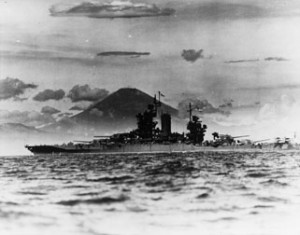 The proud history of the USS New Mexico stands front and center at the New Mexico History Museum Jan. 23-May 9, with a special installation and opening event featuring the ship’s commanding officer. A Noble Legacy: The USS “New Mexico” will be displayed in La Ventana Gallery at the museum’s main entrance with photographs from both the battleship New Mexico (BB-40) and its new, namesake submarine,
The proud history of the USS New Mexico stands front and center at the New Mexico History Museum Jan. 23-May 9, with a special installation and opening event featuring the ship’s commanding officer. A Noble Legacy: The USS “New Mexico” will be displayed in La Ventana Gallery at the museum’s main entrance with photographs from both the battleship New Mexico (BB-40) and its new, namesake submarine, 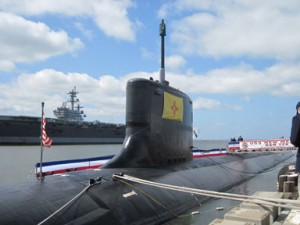 One of the Navy’s newest nuclear submarines now carries the name New Mexico and, like her predecessor, she, too, is among the most advanced ships of her class. New Mexico scientists have been instrumental in the development of her nuclear technology. And although her fire power is awesome, perhaps her greatest service is as a silent deterrent to aggression, expressed in her motto, “Defendemos Nuestra Tierra” – We Defend Our Land.
One of the Navy’s newest nuclear submarines now carries the name New Mexico and, like her predecessor, she, too, is among the most advanced ships of her class. New Mexico scientists have been instrumental in the development of her nuclear technology. And although her fire power is awesome, perhaps her greatest service is as a silent deterrent to aggression, expressed in her motto, “Defendemos Nuestra Tierra” – We Defend Our Land.